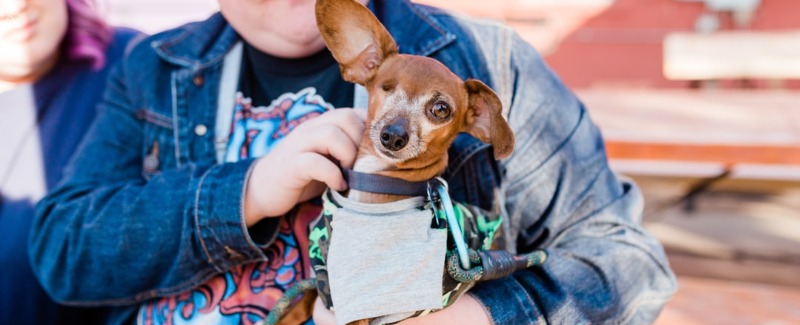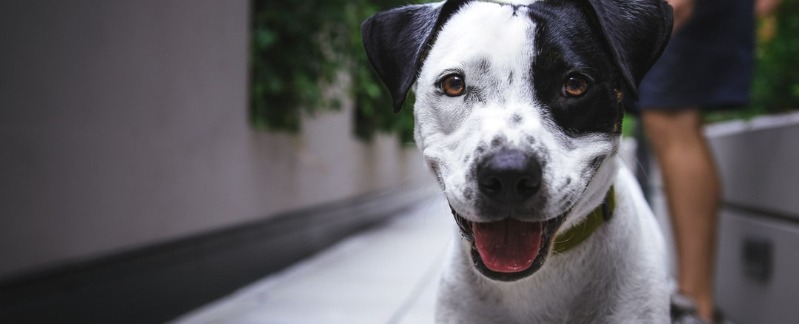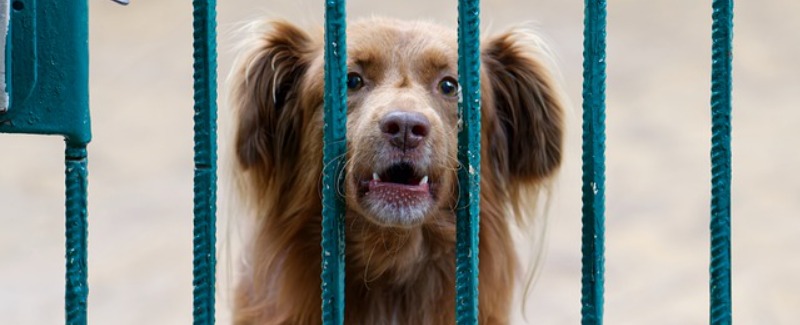It is always something of a challenge to integrate a completely foreign species into a human household successfully. Because dogs have been living with us in our homes for so long — at least tens of thousands of years — it’s almost as though we expect them to become human, forgetting that they are a complicated and complete species on their own, with a markedly different perception of what is normal or acceptable behavior. Living with dogs successfully includes understanding, accepting, and relating to them for what they are, and not just for what we want them to be.
Living with a Disabled Dog
Contents
There are some special challenges to living with a disabled dog — emotional, physical, and sometimes financial. But dogs play the cards they’re dealt, without self-pity, so if you do share your life with a disabled dog, you can give him a full and fulfilling life.
Just a Dog
Here’s a little secret: disabled dogs don’t know or care that they’re disabled. They don’t feel sorry for themselves, and neither should you. Give them the respect a proud dog deserves, and treat them just like any other dog, with consideration for their abilities and limitations.
You do have to make some adjustments in how you live with them and train them for safety reasons, but that doesn’t mean that they should be put in a bubble. For example, a reasonable accommodation for a deaf dog would be to not let him off leash, at least in unfenced areas. Don’t move the furniture around if you have a blind dog, or get steps, a ramp, or even wheels if you have a physically disabled dog.
Push it to the Limit
Disabled dogs don’t need pity, but they do need leadership, management, socialization, and training just as much as any other dog; in some cases, more. You may have to make some adjustments to the cues you use, or in how your dog performs the exercises, but do engage their minds and bodies to the limits of their abilities. The Web site www.petswithdisabilities.org has a wealth of information, not to mention inspiring stories, about living with a disabled dog.
Single Dogs, Multiple Dogs
Whether you only have one dog, two, or a whole pack, each scenario has its own unique set of benefits, drawbacks, challenges, and realities.
Living with a Single Dog
Living with only one dog is, for the most part, a little easier, or at least less labor-intensive than living with multiple dogs. However, only dogs can sometimes have a skewed sense of reality, and become antisocial and spoiled if their needs for regular socialization with their own species are neglected. Oftentimes, owners of single dogs are overprotective of their “furbabies,” and cater to their every whim to the point of obsession, unfortunately often resulting in a dog that is a neurotic mess.
To be really happy, your single dog needs leadership, boundaries, exercise, affection, training, and socialization more than he needs to be showered with loads of undeserved adoration.
Living with Multiple Dogs
Living with multiple dogs has its own challenges. In general, or at least without really good leadership, the more dogs you have, the more they tend to act like dogs. You have to make an effort to make sure each dog bonds to you and respects you as the leader. To some extent, you have to let the dogs sort out their own pack order, but you always have to be the pack leader, without an iota of doubt in any of your dogs’ minds.
Don’t get a dog as a pet or playmate for another dog. You never know how they’re going to get along, and if you don’t have the time or energy to exercise and play with one dog, you definitely don’t have time for two! Littermates are exceptionally difficult. They usually overbond to each other, and basic temperament traits like dominance or shyness tend to become exaggerated.
It’s a lot of work each time you add a dog to your household, who will naturally bond easily to other dogs, but probably not as easily to you. Crate the new dog separately, and do lots of individual work with her (and with your other dogs). She should have some freedom within the pack, but much of her early time in her new home will be spent tethered to you. When you can easily call her away from playing with the other dogs, she can have more freedom with the rest of the pack.





